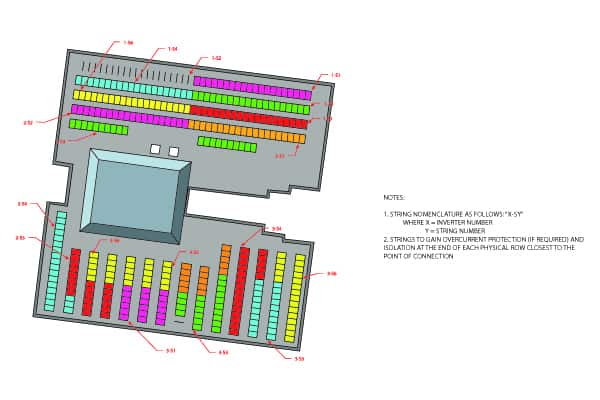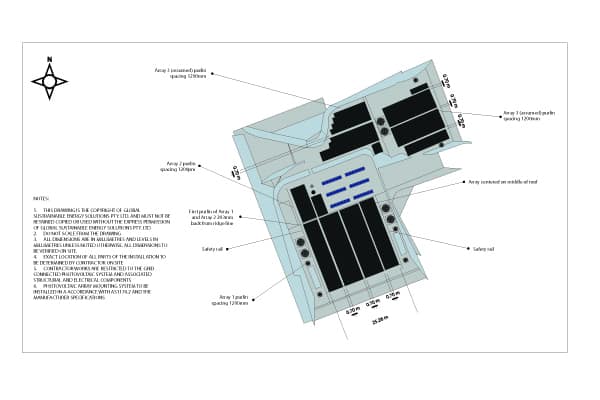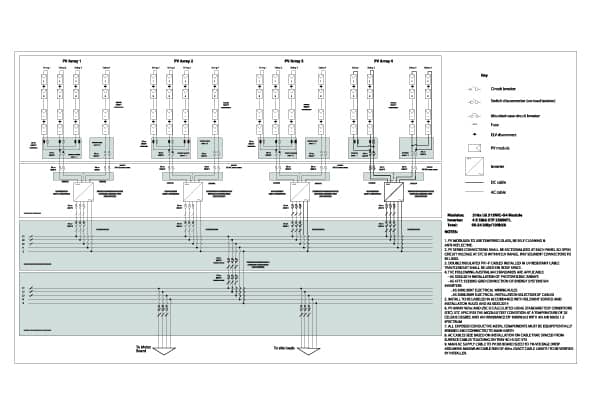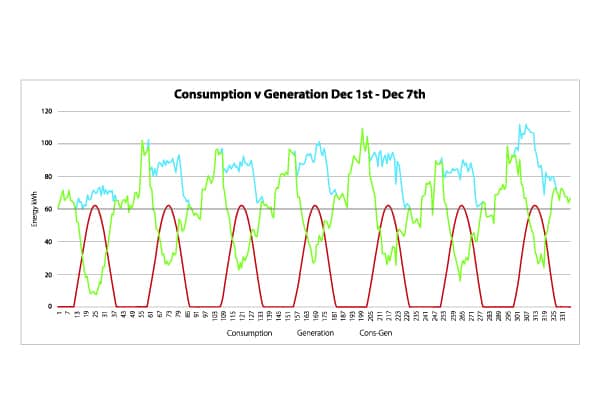GSES: Shine among your rivals
 GSES outlines design techniques and supporting processes for maximising an installer’s on-site efficiency, the time required for complete installation, system costs and customer return.
GSES outlines design techniques and supporting processes for maximising an installer’s on-site efficiency, the time required for complete installation, system costs and customer return.
Photovoltaic systems on a commercial scale present substantial opportunities for our industry.
ADVERTISEMENT
However, sourcing and verifying a range of site-specific data for a large project is challenging.
In addition, ensuring that the data meets all aspects of the system’s performance and installation criteria can be complicated – and unfamiliar to some system designers and installers.
These are possible scenarios:
- ensuring that correct cable distances and gauges have been calculated;
- determining which products support zero PV export or additional grid protection, and how they are programmed;
- avoiding unplanned additional work on site; and
- checking that the bill of materials is comprehensive and whether there are enough materials to complete the installation.
Clients often request financial data for the proposed installation, such as the internal rate of return or levelised cost of electricity. As system designers, we must be able to justify these calculations.
The prospect of engaging in quotations for larger installations is daunting. Do you have the skills to meet the market?
A detailed site-specific system design should provide the bill of materials, system cost range and performance data in a clear and logical fashion. This information will ensure a smooth installation process and conformity with specifications.
A system design from an engineering consultant gives the installer all the information for an efficient and smooth installation.
Using a specialist offers many benefits, including:
- Increased margins via optimised cable, module and racking locations, resulting in faster installation and reduced materials.
- Access to projects beyond current skill levels, via installation methodology for projects that require advanced control and monitoring systems using programmable logic controllers and zero export relays.
- Market access to larger projects, which often require detailed engineering designs that an installer doesn’t have time to do. An engineering consultancy can complete these and complement them with professional presentations to improve contract chances.
- Maximised customer profit, through giving the installer accurate analyses of power generation and cost savings.
- Reduced return-to-site obligations, as the detailed engineering design provides a full account of all materials and equipment, thereby eliminating delays from sourcing additional supplies.
By using an engineering consultant for this type of work, additional services can be offered. These include distribution network service provider (DNSP) liaison, site assessments and power station registrations, all of which enhance installation and ensure a smooth transition of control to the owner.
Preliminary and detailed system designs are an obvious way of differentiating your installation practices from those of competitors.
The documents provide the analytical platform underpinning the optimisation of system installation and performance.
Important considerations include:
- shading;
- row spacing;
- module tilt and orientation;
- oversizing ratio;
- wiring runs; and
- cable size.
A preliminary design offers information vital for winning a contract, including elements such as plan view diagrams, fly-over video presentations, monthly power generation analyses, required design calculations and material costings.
A detailed design provides the installation ‘road map’ – site layout plan drawings, string layout drawings, elevations, inverter station drawings, electrical drawings, protection and zero export schematics, and a bill of materials.
In addition, a detailed report explains the design choices and installation methodology.
An installer can safely follow these drawings knowing the system will meet the CEC, Australian Standards and best practice guidelines.
The GSES design report also complies with the DNSP document requirements and can be submitted alongside an application to connect.
High-quality system designs should contain the elements set out below.
Site assessment – Roof structure, roof obstacles, building height, shading, roof type, access and existing electrics.
An assessment can be conducted by the engineering consultant or by the installer. When the latter is used, the consultant provides questionnaires and forms to the installer to ensure adequate information transfer.
A site assessment is essential for completion of the system design.
Plan view diagrams – Module layout, module spacing on roof, row spacing, shading, purlin spacing, and feet and rail spacing.
System design calculations – Number of modules in series and parallel; cable, isolator and circuit breaker sizes; maximum power point (MPPT) tracking configurations; inverter inputs; and system protection requirements.
Electrical schematics – Cable sizes, isolator rating, fusing and MPPT configuration requirements as well as additional safety and protection integration information.
Bill of materials – This is based on the design drawings and schematics, allowing the quantities of all major and minor components to be defined.
String layout and electrical wiring drawing – Highlights the module strings, method of connection and cable run locations in roof space, conduit and cable tray.
Financial analyses – Consumption data and predicted system yield information will allow for accurate calculation of system return and savings.
The system design process and documentation allows installers to visualise the installation.
They can then anticipate and mitigate any issues and provide accurate data on performance and financial return to the customer.
The information offers potential for installation cost savings by reducing materials requirements and time to completion, thereby improving margins for installers.
-
ADVERTISEMENT
-
ADVERTISEMENT




